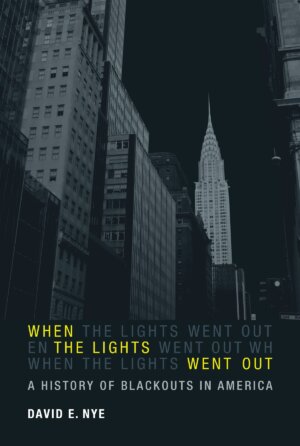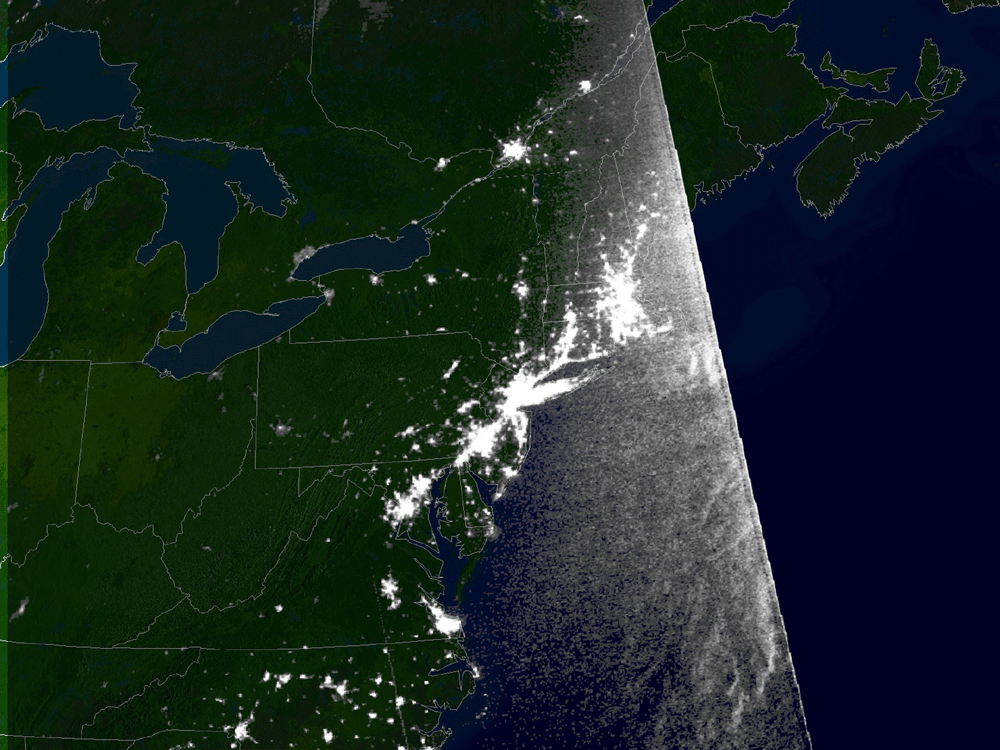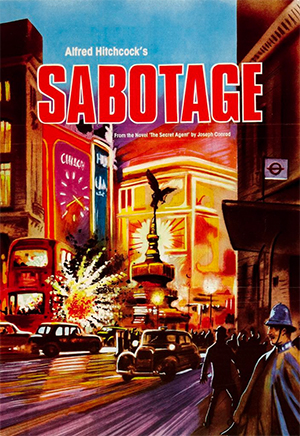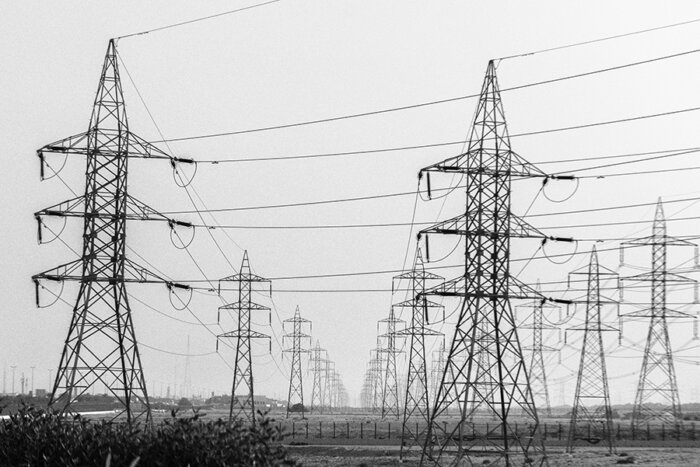When the Lights Went Out: On Blackouts and Terrorism

When the Northeast Blackout of 2003 killed electricity to more than 50 million people in the United States and Canada, the night sky turned so pristinely dark that in some cities the milky way could be seen by the naked eye. But in New York City, where hundreds of commuters were suddenly trapped in stranded subway trains and stalled elevators, stargazing remained far from people’s minds, at least until initial fears subsided. One reporter in Times Square observed “the bewildered, disoriented throngs, frightened by thoughts of terror” who “were trying to get their bearings in an environment that had been transformed in an instant.”

The FBI, like many in New York who were still reeling from the September 11, 2001 attacks, shared these concerns. Just the previous year the agency concluded that terrorists were studying weaknesses in power grids. Meanwhile, groups across the country had been preparing for and speculating about doomsday scenarios — scenarios that the first moments of the 2003 blackout mimicked to a disquieting degree.
A generation ago, the immediate question when the lights went out was whether a fuse had blown or lightning had struck. But today, when a blackout strikes, time stops, plans fall apart, and fears fill the sudden void.
The FBI’s Cyber Division ultimately found no indication that the outage was the result of an attack; a failed power line and crumbling infrastructure were entirely to blame. But what if enemies had targeted the power system to augment a physical or biological attack?
The military has long understood the centrality of electricity to society. In World War II, both the Allies and the Axis Powers attacked power plants. During the 1992 siege of Sarajevo, Serb nationalists dynamited four power-transmission lines into the city, taking electricity away from 400,000 people. The U.S. military, meanwhile, has designed weapons specifically to incapacitate electrical networks, including the BLU-114/B “soft bomb,” which supposedly disperses a cloud of graphite filaments and tiny wires that short-circuit transformers and switches (information about the weapon remains classified). When used against Serbia in May 1999, the bomb blacked out 70 percent of the country; a similar weapon had been deployed with success in the 1991 Desert Storm operation against Iraq.
Power grids, nuclear power stations, and computer systems are all potential targets for terrorists. An electrical network is built to be resilient, but an attack on certain nodal points might trigger “a cascade of overload failures capable of disabling the network almost entirely,” as two network systems experts found. A terrorist cell that included several senior commanders of the Irish Republican Army and a former U.S. Marine recognized this when, in 1996, they prepared to attack the electrical system of London and southeast Britain. While their plan was ultimately foiled by the British Secret Service, who found in the cell’s possession diagrams of six power substations in a ring around London and enough detonators and fuses to arm 37 bombs, other groups have had more success.

Between 1975 and 1995, the National Liberation Front of Corsica struck Corsica’s electrical system on multiple occasions, according to a report issued by the Center for Nonproliferation Studies at the Monterey Institute of International Studies. In the Philippines, the Communist New People’s Army, the Moro National Liberation Front, and the Abu Sayyaf group all attacked the electrical grid. And in South Africa, a military wing of the African National Congress carried out multiple attacks on electrical stations during the apartheid regime. These groups operated inside their own country. Their motivation, the report from the Center for Nonproliferation Studies found, was primarily to embarrass the government without many casualties, which could weaken popular support. In contrast, terrorists who attack countries other than their own generally want to destroy national symbols and to maximize human suffering. They prefer not transmission lines but highly visible locations such as churches in Sri Lanka on Easter Sunday. This helps to explain why the power grid has not been a primary terrorist target.
Assaults on critical infrastructure have increased worldwide from 42 during the 1960s to more than 25 a year since 1990.
Yet assaults on critical infrastructure have increased worldwide from 42 during the 1960s to more than 25 a year since 1990. The targets of major strikes have been oil and gas facilities (50 percent), electrical infrastructure (15 percent), office buildings (8 percent), railways (5 percent), and a wide range of miscellaneous facilities (22 percent). Fifty years ago, religious groups almost never made such attacks, but between 1980 and 2004 Islamist groups alone targeted infrastructure 84 times. Moreover, al-Qaeda members have specifically listed infrastructure attacks as a primary objective when attacking industrialized countries. In fact, computers captured from Afghanistan had been logged on to sites dealing with utility security.
After a major blackout in 1965 impacted an estimated 25 million people, the U.S. federal government “focused increased attention on the vulnerability of power systems to disturbance and damage from acts of sabotage,” according to a Federal Power Commission report from the time. But by far the most serious threat remained terrorism directed at nuclear plants or using stolen nuclear fuel. Between 1969 and 1971, explosives were discovered at a research reactor at the Illinois Institute of Technology, for instance, and bombs were detonated in the Stanford University Linear Accelerator, causing substantial damage. Nevertheless, the isolated location, solid construction, and high security surrounding nuclear facilities make them less vulnerable to attack.
Far more worrisome are dangerous “dirty bombs” that could spread deadly plutonium over a wide area. The Atomic Energy Commission concluded in 1974 that “the potential harm to the public from the explosion of an illicitly made nuclear weapon is greater than that from any plausible power plant accident, including one which involves a core meltdown.” Perhaps even more unsettling is the threat of an electromagnetic pulse, or EMP, attack. As Lowell Wood, an astrophysicist involved with the Strategic Defense Initiative and former chair of the EMP Commission concluded, EMP “is one of the few ways in which the United States can die as a nation.” It is “not a blackout,” he added, “it is a stayout.” Indeed, the commission noted an attack would paralyze much of the U.S., shutting down radio, television, and the telephone system. The nation would not be able to harvest, store, ship, or market food. Hospitals, schools, factories, and offices would cease to function. It would destroy computer chips embedded in millions of devices, yet leave the physical landscape intact. In theory, EMP damage from one bomb exploded over Kansas could black out most of the United States. Fortunately, vulnerability to EMP can be reduced; it only requires adopting more robust shielding materials.
Yet even with the recognition of these threats, little was being done to improve the electrical grid before the 2003 blackout. This despite the North American Electric Reliability Council, an industry group, warning that the grid was not being upgraded fast enough, and concluding that “the question is not whether, but when the next major failure of the grid will occur.”
One civilian defense expert concluded that an electromagnetic pulse attack “is one of the few ways in which the United States can die as a nation.”

Without electricity, society loses most of its critical infrastructure. Yet the U.S. electrical system is hard to protect because of its sheer extent, and though American grids have not been attacked, it is not because they are impregnable. Perhaps Alfred Hitchcock’s 1936 film “Sabotage” suggests why transmission systems are not yet a target of choice. The film begins with a blackout that darkens a whole district of central London. A saboteur has thrown sand into some powerhouse equipment, and it takes an hour to clean and restart the system. The public response to this unexpected darkness, however, is not fear but nonchalance and even considerable laughter. Like the crowds in the 1965 New York blackout three decades later, Hitchcock’s Londoners take it with aplomb. Frustrated at this result, the saboteur then decides to bomb a crowded public place. This seems more likely to cause panic than a blackout. Even in 1936, it was clear that short-lived power outages cause few or no deaths and little destruction, whereas a bomb causes both and is terrifying.
Nevertheless, in the popular imagination, a blackout can have dire consequences, leading to spectacular unrest or social collapse. Josef Konvitz, an expert on crisis management, has called this “the myth of terrible vulnerability,” depicting catastrophes that are out of control while ignoring the human ability to improvise solutions and cope with hardships. With worst-case scenarios, popular films and novels depict the electrical system as an ideal terrorist target. After the 1977 New York blackout, Arthur Hailey’s novel “Overload” described a terrorist attack on California’s electrical system during a summer heatwave. It was among the top five New York Times best-sellers of 1979. In his 1987 novel “Patriot Games,” Tom Clancy described an electrical engineer in Baltimore, determined “to hurt America” by “hitting people where they lived.” The character muses that “if he could turn out the lights in fifteen states at once” he would weaken public confidence in the government. A similar theme underlay the 2007 film “Live Free or Die Hard,” in which a disaffected former national security employee, angry because the government has ignored his warnings about the vulnerability of the United States to a computer attack, launches one himself.
Electrical engineers have warned that a “determined group of terrorists could likely take out any portion of the grid they desire.”
But “Live Free or Die Hard” exaggerates the centralization of the grid. There is no single command-and-control center that can turn off all of the East’s electrical systems. Rather, as the electricity consultant Jason Makansi concluded, the U.S. transmission system in some ways is poorly integrated: “Not only is our electricity grid ‘third world’ in quality, it is actually weakly interconnected.” However, he adds, “a weakly interconnected grid may be beneficial when it comes to security. Disconnected systems cannot all fail together.” Utilities are linked, but each can cut itself off from the grid.
Terrorists could more easily provoke a widespread blackout by blowing up transformers or shutting down transmission lines, causing power surges and a cascade of automatic load shedding. This would recapitulate the 2003 blackout that rippled from Ohio to Detroit, Cleveland, Toronto, and New York. Only after that expensive failure did utilities adopt improved communication systems between regions so operators could see what was going on elsewhere on the grid. “Think of an air traffic controller’s screen,” one operator told the New York Times. “The circle we can scan just got a whole lot bigger. So if there are blips [breakdowns or irregularities] further out, we see them right away.” They got information far faster than they could have gotten it by telephone. Indeed, during a crisis, phone calls can be distracting, and it is often difficult to explain verbally a rapid succession of events, which can be quickly grasped in visual representations.

Yet a cascade is extremely difficult to stop. Electrical engineers have warned that “it is impossible to secure the whole system,” which includes more than 180,000 miles of transmission lines, and that a “determined group of terrorists could likely take out any portion of the grid they desire.” The most vulnerable components are high-voltage transformers, many of which are located in substations protected only by chain-link fences and could be taken out with improvised explosive devices.
The grid is also vulnerable to cyberattacks. In 2000, expert witnesses before Congress estimated that terrorists needed only 5–10 years to develop the technical capabilities to inflict major damage on the United States. Indeed, a “skilled hacker could disable a network of several plants without ever entering a facility,” journalist Johanna McGeary points out. He or she could tamper with the monitoring and control software systems, which “often lack rudimentary security, leaving technical specifications and flaws on view to potential attackers.”
“Live Free or Die Hard” reinforced the notion circulating in popular culture that a power failure is the ultimate collapse, ripping away the underpinnings of the computerized state. However, the visions of catastrophe that pervade popular culture overemphasize vulnerability and overlook adaptation and improvisation. Moreover, in anticipation of possible infrastructure attacks, utility companies have worked with the Department of Homeland Security to prepare contingency plans. The focus has been less on the transmission lines, which can rapidly be restrung, than on hardening nodal points of vulnerability against attack and erecting more barriers against intruders. Security measures also continue to focus on nuclear plants and hydroelectric dams, whose impounded waters, if released, would cause destructive flooding as well as power failures. As for cyberattacks, utility computers are in some ways more vulnerable now than before the advent of the internet. Until the mid-1990s, most utility companies had standalone systems that were distinctive in design and cut off from computers elsewhere. Their incompatibilities and relative isolation from one another were undesirable for day to day operations, however, so the companies increased transparency and interoperability, enhancing the operators’ access to crucial information in emergencies but simultaneously opening up the electrical grid to hackers.
The visions of catastrophe that pervade popular culture overemphasize vulnerability and overlook adaptation and improvisation.
Researchers at Carnegie Mellon University concluded that one can mitigate the effects of an attack on the electrical system more easily than one can prevent it. Drawing on experience with rolling blackouts in California, they suggested maximum defense of essential services, including traffic control, hospitals, and the police. Rather than treat the grid as a fortress to be protected at every point, they call for a resilient system with multiple ways to supply power to any given area. Their suggestion challenges the electrical infrastructure’s design, which for decades has been consolidated into large central stations. Yet a decentralized system with a larger number of generating stations and shorter supply lines would be less vulnerable. “A more regional, decentralized electricity system,” read a pointed editorial in Bloomberg following the 2003 blackout, “may actually be more rational, especially in an age of insecurity.” In 2017, Scientific American published a similar conclusion.
People content to be alone when the power is on seek others when it fails. They want information and reassurance. As long as electricity supplies light and communication, the regular pulse of electrons is an indirect assurance that society is humming along and that a safety net of services surrounds and protects. Disrupt the flow and people immediately look for human contact. Adding the threat of terror to a power outage amplifies both fear and the desire for community.
When the lights go out, the sheer physicality of the world and its inhabitants becomes bewilderingly near.
After the rolling blackouts of the 1990s, and especially after Sept. 11, 2001, the public does not take blackouts lightly. Rather, they improvise moments of solidarity, based on the implicit belief that the power will soon return. Once initial fears are dispelled, people flock into the streets, and the blackout can become a carnival, not an apocalypse. The Russian critic Mikhail Bakhtin noted that during a carnival “people who in life are separated by impenetrable hierarchical barriers enter into free and familiar contact.”
Something similar occurred in New York in 2003. As in the 1965 blackout, few people could work and all had to negotiate a city without most of its amenities. At Muldoon’s Irish Pub on Third Avenue, “the loss of power meant a license to party.” Patrons ordered extra beer, and many ambled outside, glasses in hand. The New York City-based blog The Gothamist reported that at first the event “made New Yorkers wonder if there was another terrorist attack” but “then they just settled in for some street parties after finally making it home.” Many brought out battery-powered audio players, sat on their front stoops, and partied into the night. According to one bystander’s account, recounted in Phillip Schewe’s book “The Grid,” the “August 14 event was a bit like the medieval Feast of Fools, the Yuletide holiday when in towns around Europe class distinctions were suspended, if only for a day, and masters and servants switched places, church observances were mocked, and revelry overruled solemnity.”
During this time, the city was “re-materialized.” The visiting Brazilian architect Fernando Lara later wrote: “Forget Virilio and Baudrillard and the virtual realities, there is no compression of time and space anymore. You are left alone with the disvirtual reality of space.” Suddenly it was not possible to mediate one’s relation to the built environment, which had to be measured by the body and its ability to climb, to walk, and to adjust. “Without neon lights and electronics, space becomes what it has always been,” he added, where one “cannot hide behind a wireless phone nor dive yourself into the Internet.” The sheer physicality of the world and its inhabitants becomes bewilderingly near.
The average cost of the 2003 power loss was almost $60,000 per hour per business, but some corporations lost as much as a million dollars an hour.
In 2003 such disorientation did not presage riots. Predictions that future blackouts would lead to unrest, persistently made during the 1980s and the 1990s, proved incorrect. Fear of terrorism partially explains why neighborhoods that erupted in looting and arson in the blackout of 1977 displayed social solidarity in 2003. But just as importantly, by 2003 New York had regained prosperity.
More than 200,000 people owned inexpensive apartments that had been built or renovated in areas that had rioted in 1977. People whose homes are appreciating are unlikely arsonists. Furthermore, New York’s policing had improved. The blackout came when merchants were in their stores, and millions of people were walking home. The economic impact of the 2003 blackout was much greater for commerce and industry than for households. All businesses from Detroit to Long Island were affected. At John F. Kennedy Airport, 50,000 bags could not be scanned, located, or returned to their owners, whose flights were canceled. More than 70 automobile and auto-parts plants shut down, sending 100,000 workers home. Eight oil refineries stopped production, and the main pipeline carrying Canadian oil to the United States stopped pumping. Steel plants lost batches of molten iron that had to be dumped into slag pits, and it took four days to resume production. At food-processing plants, tons of meat, fruit, and vegetables rotted. The average cost of a power loss was almost $60,000 per hour per business, but some corporations lost as much as a million dollars an hour. White-collar work losses, meanwhile, were often instantaneous and usually irretrievable. All unsaved data and many emails were lost.
The power failure exposed just how dependent on electricity American society had become.
Human beings are no longer awed by the immense changes electrification made possible in lighting, manufacturing, transportation, and domestic life, and few are concerned that nations have become so dependent upon electricity — perhaps because it now seems to have been always already there. The wall switch and the light socket seem natural, a power failure unnatural. People notice electricity only in its absence. Blackouts, after all, are breaks in the flow of social time. Each time one occurs, we confront our essential condition — not as isolated individuals, but as a community that increasingly binds itself together with electrical wires and signals.
David E. Nye is Professor of American History at the University of Southern Denmark. He is the author of several books, including “American Illuminations,” “Electrifying America,” and “When the Lights Went Out,” a trilogy of works that form a collective history of electricity and lighting in the United States.
Correction: An earlier version of this article erroneously stated that explosives were discovered at the Point Beach Nuclear Plant between 1969 and 1971.



